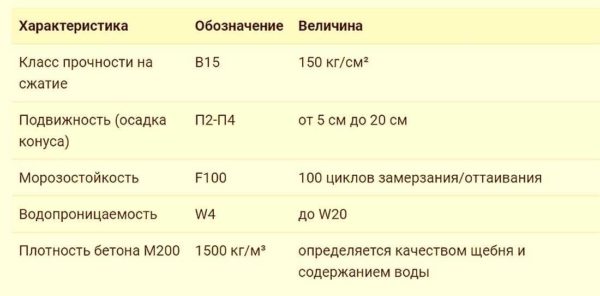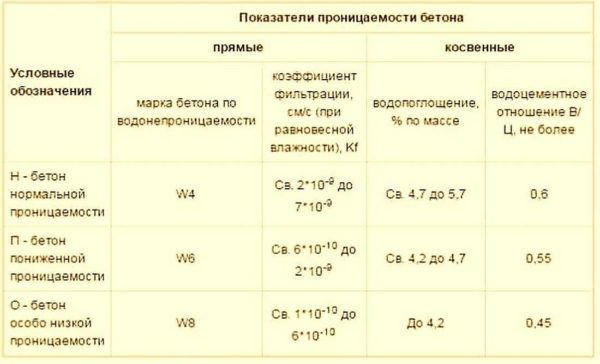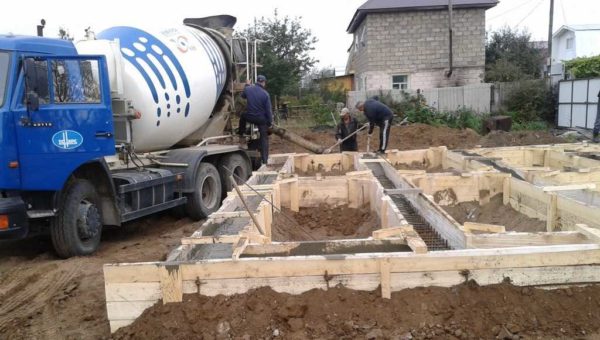Concrete grade M200: proportions, composition, mixing
In private housing construction, concrete is used everywhere. Foundations, blind areas, paths are made of it. Often, concrete of the B15 M200 brand is used for these purposes - this is the best option in many cases.
The content of the article
Properties
Concrete grade B15 M200 can be called one of the most widely used in private construction. Foundations for one-story buildings are made from it, if a large load is not expected. It is used when pouring garden paths, other concrete works that are carried out on the farm.
According to the new classification, concrete is characterized by compressive strength. Grade M 200 corresponds to class B15. This means that this concrete stone, after gaining design strength, will withstand a load of at least 150 kg / cm². This strength is more than enough for any one-story house or attic houses.
Frost resistance - the ability to tolerate freezing / freezing cycles without damage. It is about 100 cycles for M200 concrete. Another important criterion is water resistance. It is the ability to resist water penetration. M200 grade belongs to the category of materials with normal permeability. If protection from water is important to you, look towards higher grades.
The other two parameters, mobility / hardness and density, are determined by the selection of gravel and the amount of water. The proportions are usually given as "average" for average parameters. But you have to be very careful with changing them. Even a small deviation can greatly affect the result. Having poured a couple of glasses of water onto one concrete mixer, you risk getting too liquid a solution that can lose strength.
The weight of a cube of concrete M200 in a liquid state is about 2362 kg / m³, in a dry form the weight of one cubic meter is 2162 kg / m³. These are averages, as specific weights depend on density, additives and other factors. Differences can be about 4-6% of the above figures. So you can focus on these figures.
Application area
The scope of application of concrete grade B15 M200 follows from the listed properties. The main thing to look out for is water resistance. This can be important when pouring a foundation in a high water table. In this case, it is better to choose a water-resistant composition. The rest of the area of use for concrete M200 is as follows:
- In production reinforced concrete foundation blocks.
- Staircases, other staircase elements.
- Floor slabs.
- Paving slabs.
- Pouring concrete paths.
- Strip foundations for one-story houses.
- Fence foundation.
- Screed (with a thickness of 5 cm with fine crushed stone).
Depending on the thickness of the required layer, the size of the aggregate is selected - crushed stone. The maximum particle size should be no more than half the layer. Therefore, concrete of the M200 brand is distinguished between coarse-grained and fine-grained. In the first version, coarse gravel is used, in the second - fine.
Composition and proportions
Like all others, concrete of the B15 M200 brand consists of a binder - cement, aggregates - sand and crushed stone. All these components are mixed and diluted with clean water to the state of a batter or thick sour cream. In general, the density can be different depending on the requirements. For example, in the formwork with fittings a more fluid composition is needed, since the solution must fill the space between the reinforcing bars.
Only dry ingredients are given in the tables. Water is added based on the required hardness of the solution. The average water-cement ratio is 0.6.This means that water must be taken 0.6 of the mass of cement. Simply put, add 600 ml of water to 1 kg of cement. To begin with, it is worth measuring this amount. IN concrete mixer add half at once, then in small portions until the desired consistency. As a result, there may be a little more or a little less water. Even the moisture content of the sand affects its amount.
The composition of grade 200 concrete in the table is given both in mass fractions and in volume. When purchasing, it is more convenient to operate with kilograms, and usually they are poured into a concrete mixer with buckets or shovels. Volume fractions are more useful here.
Consumption of components per cube of concrete
When purchasing materials for concrete, first determine how much mortar is needed, and then materials are considered for it. Sand and crushed stone can be taken with a certain margin - they are still needed for bedding, other construction work. Although, if you look on average, 1060 kg of crushed stone and 900 kg of sand are used for one cubic meter of concrete M200.
It is better to take cement "just barely enough". This material significantly loses strength during long-term storage. So, three months after the date of production, its strength becomes 20% lower, after six months the losses are 30%, and after a year - 50%. So, firstly, you need to buy fresh cement, and secondly, it is better not to take excess.
To find out how much cement you need for work, multiply the number of cubes by the consumption rate. It can be for kilograms or for bags. But keep in mind that the packing can be 40 kg or 25 kg. So the figure in kilograms should be remembered.















